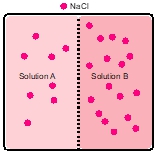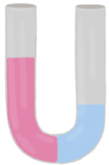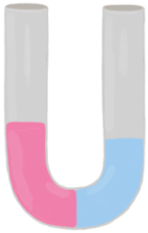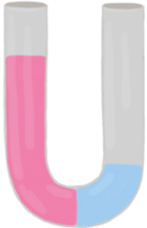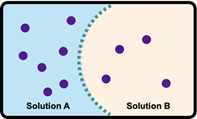All right everyone. So at this point we can say that the solvent moves from a lower concentration solution to a higher concentration solution and eventually equilibrium is reached and the net flow of solvent is stopped by osmotic pressure. Now what exactly is osmotic pressure itself? Well, it's the counterforce required to stop the flow of solvent through the semi permeable membrane.
So let's pretend that my hand is this semi permeable membrane and we have the flow of water on this side is less concentrated over here on the other side of the semi parallel membrane, it's more concentrated. Water's going to want to flow through this semi permeable membrane to the other side. Now as water's flowing through, there's going to be some resistance. There is a pressure that's on this side of the semi permeable membrane. That pressure is osmotic pressure.
So the solvent's passing through the semi permeable membrane trying to go from the less concentrated solution to the more concentrated solution. But my osmotic pressure that's building behind here is trying to stop the flow of water or the flow of solvent. OK. So that's what osmotic pressure is. It's the counterforce that's pushing against the sulfur that's coming through the descending parallel membrane.
Now if we take a look here at this image, we have these little blue spheres which represent our solvent molecules and then we have our solute molecules. If we take a look at our two images, we can say in the top part we have how many solute particles. We have 123-4567 of the solute particles and then we only have 3 solvent. Then if we look at the bottom part we have what 2 solute and we see that we have way more solvent, a ton. So actually let's count. We have 123456789101112131415, right? So we have 15 solvent.
We didn't really need to count. We can already see there's way more solvent than solute. We can say that the bottom part is the part that is less concentrated because there's way more of our solvents there. So it's the lower concentration solution. The top part has way more solute than solvent, so it's the more concentrated or higher concentration solution. So that means water is going to flow naturally from the lower concentration side to the higher.
So water is going to move this way as it's moving through this semi permeable membrane here. Remember, there's going to be that force that's kind of trying to stop the flow of water. That's the osmotic pressure. It's building on this side here. Because remember, what's the ultimate goal of osmosis? The ultimate goal of osmosis is to get both sides to have the same equal solution concentrations.
And we're going to say the bigger the difference in solution concentrations on both sides, then the higher the osmotic pressure needed to stop this flow of solvent, right. So that's what we'd say in terms of this particular image. If we go to the other side, what do we see? Well if we go to the other side we have 123-4567 solute and then solve it we have 1234567891011121314 which is basically a one to two ratio one solute for every two solvent.
If we look here, we have what we have 2 solute and four solvent. The numbers are smaller, but if we are paying attention here, we can see the ratio is still the same. It's still a one to two ratio, it's still 1 solute for every two solvent. So all the numbers look different. The ratios are the same, so the concentrations on both sides are the same. OK. So we'd say that there is no net flow between the two because both sides already have equal solution concentration.
Alright. So here we wouldn't talk about the flow of solvent. Alright. So just remember this is what we're talking about. Osmosis is the flow of water from a lower concentration or less concentrated side to a more concentrated side. And as it's passing through the semi permeable membrane, there is an osmotic pressure that's kind of trying to stop that flow of solvent.

